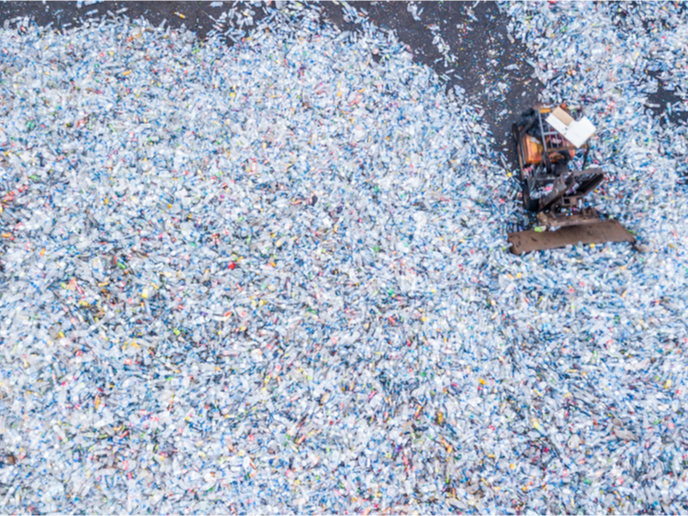How is plastic recycled?
Plastic has long been the bête noire of environmentalists. It is destined, we’re told, to remain in landfill for millennia, or choke the life out of sea creatures. So what exactly happens to the used food containers and fizzy drink bottles that we leave out for collection? “At the point of collection, there are three different pathways for plastic material – recycling, landfill and incineration,” explains Morico, a senior process engineer at NextChem in Italy. “The reason why not all plastic can be recycled is that the quality of the material decreases after each cycle, gets mixed up with other materials, and after a while cannot be recycled anymore.” She adds that blended or highly contaminated materials cannot be easily recycled either. These often end up in landfill, or are incinerated. Sorting plastic that can be recycled from the rest is achieved through various methods: by hand; by spinning cylindrical drums that allow finer materials to fall through; and/or by ‘ballistic separators’ that separate items by shaking waste on a moving conveyor belt. Different types of plastic are then separated mechanically. The most commonly recycled plastics are polyethylene terephthalate (PET), found in food packaging like drink bottles, high density polyethylene (HDPE) used in items like milk cartons and shampoo bottles, and polypropylene (PP), used to make items like ready-meal trays. “Plastic is also separated on the basis of colour,” says Morico. “The material is then washed and shredded, to produce plastic flakes that can be made into new plastic products.” However some plastic materials are harder to recycle than others. Polyester is used to make artificial fibres for clothing, netting and other applications. The base polymer molecule is actually the same as the molecule that makes PET. Polyester is a thermoplastic, meaning it can be melted and reformed. “But current mechanical separation techniques however have real difficulties with polyester,” adds Morico. “This is because the material tends to be blended with other materials, and separation is extremely difficult.” A huge amount of potentially reusable plastic therefore ends up in landfill or is incinerated. Numerous research institutions and companies are working to develop new separation techniques. One potential solution explored by Morico through the EU-funded DEMETO project is chemical separation using microwaves. This enables the polymer chains of polyester to break down, leaving small molecules behind free from contaminants and colourants. “These molecules can be recovered at a high level of purity, which means they can be reused for the production of new virgin polymer,” explains Morico. “This technique could also solve the problem of degraded polymers from other plastic sources, and ensure that more plastic is recycled.” All this bodes well for the future of plastic recycling. All EU Member States are required to establish separate collection schemes for textile waste by 2025. Efficient recycling technology will help to ensure that much of this material is reused. “Younger generations especially are very environmentally aware,” remarks Morico. “And as technology develops and collections improve, I’ve no doubt that more plastic material will be recycled.” Which means that in the future, you may end up buying bottles of sunscreen made from last year’s novelty Christmas jumper. Click here to find out more about Barbara Morico’s research: Recycling plastic waste through innovative use of microwaves



